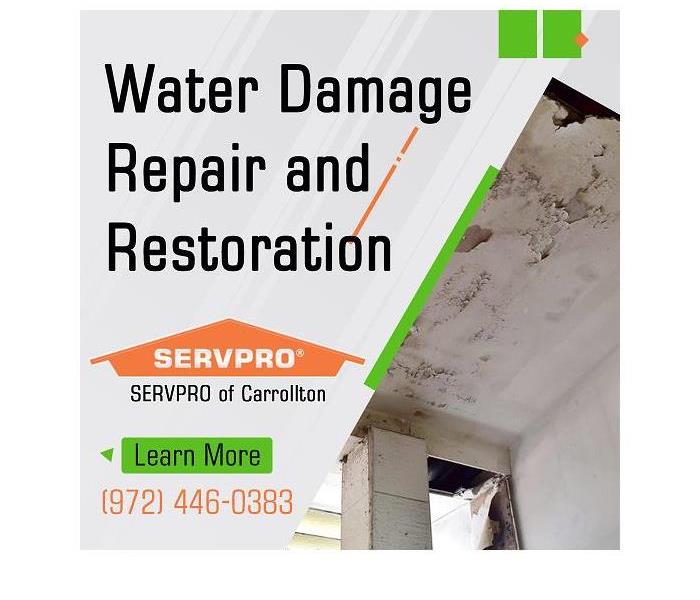The Steps You Should Take to Begin Hardwood Floor Water Damage Restoration
12/14/2020 (Permalink)
Blog Summary: If you have experienced water damage in your home, you must evacuate the water and dry your hardwood flooring as soon as you are able. Fast action could save you the trouble of replacing your hardwood flooring by preventing visible damage. Cleaning and drying the wood can also prevent mold and dirt contamination on the damp floor. The experts at SERVPRO in Carrollton, Texas, can accommodate all your water damage restoration needs.
The Steps You Should Take to Begin Hardwood Floor Water Damage Restoration
Homeowners around the world fear leaking and flooding in their homes. Not only is the invading water inconvenient, but excessive moisture in your home can lead to serious damage. If you have experienced flooding or leaking in your home, here are a few steps you can take to attempt to curb the damage to your property:
- Dry the area as best as you can. Industrial fans pointing toward the water damage will help to dry the moisture from your hardwood floor.
- Identify the source of the water. After the water cleanup, take the time to identify the source of the water. Knowing the source can help water restoration companies find a solution for your water problem as quickly as possible.
- Call SERVPRO in Carrollton, Texas, to receive expert water damage restoration and water removal.
Dealing with Damaged Flooring
If your flooring swells to the point of buckling, you should opt for a full replacement of the hardwood. The type of water that affected your flooring may also determine if you need to replace the damaged hardwood or not. If the water that caused the damage was black sewage water, a full-floor replacement will prevent the spread of contaminants in your home.
Signs and Causes of Floor Damage
Water from a variety of sources can affect hardwood flooring. Leaking pipes, backed-up sewage, natural flooding, and even saltwater fish tank flooding can all lead to severely damaged flooring.
If you have experienced excess moisture in your home, you may notice visible damage to your floors. Cupping, crowning, buckling, and staining can all result from standing water absorbed into your hardwood.
Saving Hardwood Floors
The most important factors when it comes to saving your hardwood floors are removal of the water and drying the wood. The less exposure the wood has to water and the less time it has to absorb moisture, the greater your chance of saving it. During a flood cleanup, evacuate the water as quickly as possible.
Not only will the absorbed moisture cause fluctuations in the structure of the wood planks, but the porous nature of wood makes it vulnerable to contamination by dirt and bacteria. Once your flooring is dry, you should conduct a thorough cleaning of the floors. Uncleaned flooring after severe water damage could lead to health problems in the event of mold growth.
If you can't remove the water from the hardwood surface within 24 hours, the likelihood that a full replacement will be necessary increases. Don’t let water damage restoration put your life on hold. Call SERVPRO in Carrollton, TX, for residential and commercial water damage restoration today.
About the Company
SERVPRO serves the Carrollton, TX, area for flood cleanup and water removal. Your home is our number one priority, and that’s why you can count on us at SERVPRO for fast and professional water damage restoration. Our professionals offer fast and reliable work anywhere within zip code 75006.
SERVPRO also offers mold removal, air duct cleaning service, building restoration, and fire damage restoration service. Don’t rely on separate mold remediation companies, fire restoration companies, and water damage restoration companies to take care of your home’s needs. Consolidate with SERVPRO instead. Follow SERVPRO on Facebook to find out more.

 24/7 Emergency Service
24/7 Emergency Service
